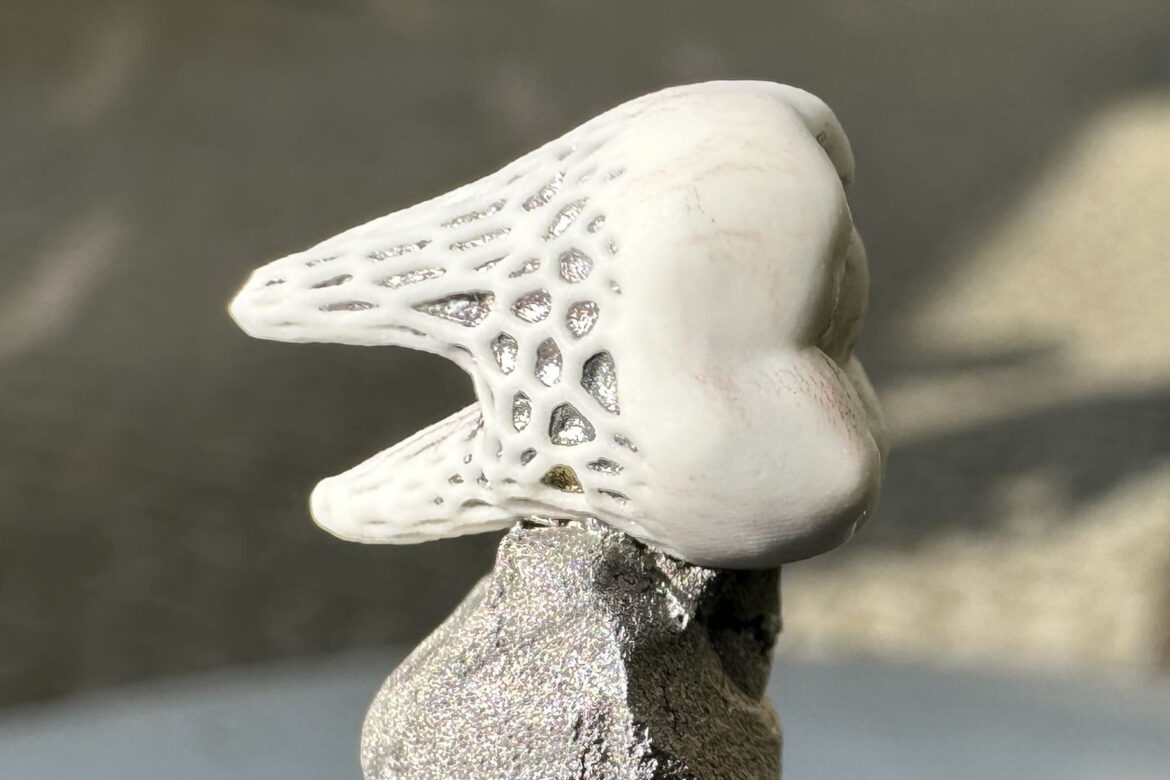Modern dental implants are being developed at the Wrocław University of Science and Technology and the National Taipei University of Technology. They will be created from 3D printed ceramic structures combined with a metal core. Thanks to the use of biodegradable magnesium, bone tissue will be able to gradually grow into such an implant.
The joint activities of the teams from Poland and Taiwan are enabled by funding from the National Research and Development Centre and MOST (The Ministry of Science and Technology in Taiwan) under the CERMET project. They will result in a composite implant that can potentially replace a human tooth. Its scaffolding is created from aluminium oxides and is manufactured using an incremental method, so-called 3D printing, which ensures that it will be tailored to the needs of the individual patient.
In the upper part (crown), the ceramic structure is solid, while the lower part (root) has a porous form. This enables it to be saturated with a liquid metal – a magnesium alloy. This will reduce the brittleness of the structure and the core itself will initially act as an ‘anchor’, holding the implant in the jaw. The magnesium will gradually degrade, releasing space for bone tissue to grow in (this is known as the osteointegration process). As a result, the implant will become very stable – embedded in human tissue.
“We are in the preliminary stages of our project, so for now we are testing two casting techniques. The first is the pressure infiltration method, precisely pressing from a liquid state, in which a ceramic mould is placed in the chamber of the press and filled with liquid metal, and then, lowering the plunger, the liquid metal is pressed into the porosity of the preform. The second technique is precision casting, used for example in the jewellery industry. Here, we first create a plaster mould for a previously prepared wax or plastic model”, says Dr Anna Dmitruk, a researcher at the Wrocław University of Science and Technology involved in the project.
Arkadiusz Słomczyński





